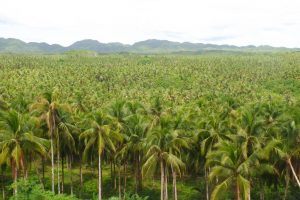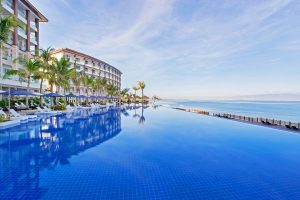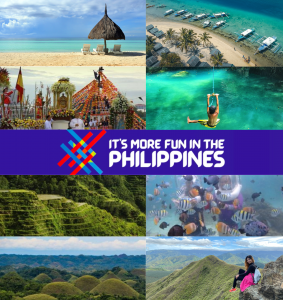The Philippines is a beautiful country made up of over 7,000 islands, each with its own unique charm. However, getting around the country can be a bit challenging, especially for first-time visitors. With the different modes of transportation available, navigating the Philippine archipelago can be overwhelming.
Understanding the Philippine geography is key to getting around. With so many islands, traveling from one place to another can take time. Fortunately, there are several modes of transportation available, both public and private. From buses and jeepneys to taxis and private cars, travelers have a variety of options to choose from.
Read: Top 20 Best Places to visit in the Philippines
Key Takeaways:
- Understanding the Philippine geography is crucial to getting around the country.
- The Philippines has different modes of transportation available, both public and private.
- Travelers have a variety of options to choose from when it comes to getting around the Philippines.
Public Transportation in the Philippines
Traveling around the Philippines can be an exciting experience, but it can also be challenging, especially when it comes to public transportation. The country has a wide range of public transportation options, including jeepneys, tricycles, buses, taxis, and ferries. Here is a breakdown of each mode of transportation.
Jeepneys
Jeepneys are the most popular mode of transportation in the Philippines. They are colorful vehicles that can accommodate up to 20 passengers. They are often used for short trips within cities and towns. Jeepneys follow specific routes, and passengers can hail them from the side of the road. Fares are usually between PHP 7-10, depending on the distance traveled.
Tricycles
Tricycles are another popular mode of transportation in the Philippines. They are three-wheeled vehicles that can accommodate up to three passengers. They are often used for short trips within cities and towns. Tricycles do not follow specific routes, and passengers can hail them from the side of the road. Fares are usually between PHP 20-30, depending on the distance traveled.
Buses
Buses are the most common mode of transportation for long-distance travel in the Philippines. They are air-conditioned and comfortable, making them a popular choice for tourists. There are different types of buses available, including ordinary, air-conditioned, and deluxe. Fares vary depending on the type of bus and the distance traveled. Book your bus trips around the Philippines.
Taxis
Taxis are available in most cities and towns in the Philippines. They are metered, and fares vary depending on the distance traveled and the time of day. Taxis are a more expensive mode of transportation compared to jeepneys and tricycles. It is advisable to negotiate the fare with the driver before starting the trip.
Ferries
Ferries are the most common mode of transportation for inter-island travel in the Philippines. They are available in different sizes, from small boats to large vessels. Ferries are often used to travel between popular tourist destinations, such as Boracay and Palawan. Fares vary depending on the distance traveled and the type of ferry. Book your ferry tickets around the Philippines.

Air Travel in the Philippines
Domestic Flights
Domestic air travel in the Philippines is a vital mode of transportation, connecting various islands and regions of the country. Several airlines operate domestic flights within the Philippines. Some of the prominent ones include Philippine Airlines (PAL), Cebu Pacific Air, AirAsia Philippines, and Airswift.
Book your domestic flights here.
International Flights
The Philippines is a popular destination for tourism, business, and cultural exchange, and international flights facilitate travel to and from the country. he Philippines has several major international airports, with Ninoy Aquino International Airport (NAIA) in Manila being the primary gateway for international travel. Other important international airports include Mactan-Cebu International Airport, Clark International Airport, and Davao International Airport.
Book your international flights here.
When departing from or arriving in the Philippines on an international flight, travelers need to go through customs and immigration processes. Make sure to have all necessary travel documents, including your passport, visa (if required), and any other relevant paperwork. Read here for more entry and visa requirements information.
Private Transportation Options
Car Rentals
Car rental services are available in various cities and tourist destinations throughout the Philippines. Renting a car can offer convenience and flexibility, allowing you to explore the country at your own pace.
Several international and local car rental agencies operate in the Philippines. You can find well-known companies like Avis, Hertz, Budget, and local providers such as Cebu Easy Rent-a-Car, Orix Rent a Car, and more. To rent a car in the Philippines, you typically need to meet certain requirements, such as being of legal driving age (usually 21 or older) and holding a valid driver’s license from your home country. Some agencies may require an International Driving Permit (IDP) in addition to your regular license.
Gasoline is widely available in the Philippines, and you’ll find gas stations in cities and along major highways. Make sure to plan your refueling stops, especially if you’re traveling to more remote areas. You can check out car rental companies here.
Motorcycle Rentals
Motorcycle rentals are a popular and convenient way to explore various destinations in the Philippines, especially in areas with scenic landscapes and winding roads. Rental requirements may vary by provider, but generally, you need to be of legal driving age (usually 18 or older), have a valid motorcycle driver’s license from your home country or an International Driving Permit (IDP), and follow any additional requirements set by the rental company.
It’s recommended to wear appropriate safety gear, such as a helmet and protective clothing, while riding a motorcycle in the Philippines. Make sure to check with the rental provider about insurance coverage and liability in case of accidents or damage to the motorcycle.
Travel Tips and Safety Guidelines
Local Customs
The Philippines is known for its warm and welcoming culture, influenced by a blend of indigenous, Spanish, American, and other Asian traditions. Traditionally, below are some of the local customs Filipinos follow:
- When meeting someone for the first time, a handshake is common. Friends and family may greet each other with hugs or cheek kisses.
- Address elders and people in authority with respect, using titles like “sir” or “ma’am.”
- It’s customary to use “po” and “opo” (similar to “yes” and “please”) to show politeness and deference, especially when speaking to older individuals.
- The Philippines is predominantly Catholic, and religious practices play a significant role in daily life. Respect religious customs and practices, even if you’re not a follower of the religion.
- The Philippines is known for its vibrant festivals (fiestas) celebrated in different cities and towns throughout the year. These events often include parades, music, dancing, and religious rituals.
- Family is central to Filipino culture. Extended families often live together or maintain close relationships, and gatherings are important social events.
- “Mano po” is a traditional gesture of respect where younger individuals take an elder’s hand and touch it to their forehead as a sign of reverence.
Frequently Asked Questions (FAQ)
Jeepneys: Colorful shared taxis with fixed routes in cities.
Buses: Connect major cities and provinces, offering various classes.
Tricycles: Motorcycle-based vehicles for short-distance travel.
Pedicabs and Trisikads: Bicycle-powered or sidecar vehicles for local trips.
Ferries and Boats: Essential for inter-island travel in an archipelago.
The best way to travel around the Philippines depends on your preferences and destinations:
For long distances, consider domestic flights. Ferries are essential for islands and coasts. Local transport like jeepneys and tricycles is budget-friendly. Renting vehicles provides flexibility.
Walking, cycling, and guided tours suit specific needs. Mix and match options based on your itinerary.
The cheapest way to get around the Philippines is by using local modes of transportation such as jeepneys, tricycles, and buses. These options are budget-friendly and commonly used for short to medium distances within cities and towns. Additionally, walking and cycling are economical choices for exploring urban areas or smaller communities. Remember to research routes and fares, and always prioritize safety while using these modes of transport.
Getting around Manila, the capital city of the Philippines, involves several transportation options:
Jeepneys: Iconic shared taxis with fixed routes, perfect for short distances within the city.
Buses: Public buses cover major roads and thoroughfares, offering various routes and classes.
LRT/MRT: Light Rail Transit and Metro Rail Transit systems provide efficient travel along designated routes.
UV Express Vans: Shared vans that operate on specific routes, often connecting suburban areas to the city center.
Taxis: Metered taxis are available for convenient point-to-point travel, but ensure the meter is used.
Ride-Sharing Apps: Services like Grab offer convenient and reliable rides. You can also download Angkas – which is a motorbike ride sharing app.
Did we miss anything else? Let us know in the comments.
Don’t know how to start planning your Philippines trip? You can start here.
| GO AROUND PHILIPPINES USEFUL TIPS AND LINKS |
|---|
| BOOK YOUR FLIGHTS To travel around the Philippines, there are 3 local commercial airlines. Cebu Pacific Air, AirAsia and Philippine Airlines. Smaller airlines called AirSwift (El Nido, Boracay) and Royal Air also fly to limited destinations. Book your local flights here. For international flights, I found Kiwi and Trip.com have cheaper flight options to the Philippines. |
| BOOK YOUR ACCOMMODATION There are many choices of hotels, hostels, apartments and guesthouses to stay in the Philippines. Book through AGODA for the cheapest options and Booking.com. I also use Hotelscombined to see all prices from different websites to choose from. |
| BOOK YOUR BUS/FERRY/VAN/CAR The Philippines can be difficult to go around because many buses, ferries and even private vehicles are offline. The best websites to book them are through Bookaway.com and 12GoAsia – they have many partners in different destinations and you can purchase tickets online. Car rentals are also available for you to choose from here. |
| BOOK YOUR PACKAGE TOURS If you don’t know where to go and just want a hassle free trip to the Philippines, you can find package trips to different destinations with Klook – I recommend them for local tours and activities or Get Your Guide. |
| DON’T FORGET YOUR TRAVEL INSURANCE |
| It is very important to be safe and ready whenever accidents happen, especially in the Philippines where some places don’t have quality hospitals and clinics. I use Safety Wings for whenever I travel in the Philippines or abroad. |
| Have you got any questions about traveling to the Philippines? Join our Philippines Travel Planning FB Page to get your answers. Don’t know how to start planning your Philippines trip? You can start here. |

Angie is a travel consultant and blogger who has started by writing her travel memoirs on her blog and then got published on international travel sites. She’s now focused on creating in-depth travel itinerary and articles about planning trips to the Philippines.




